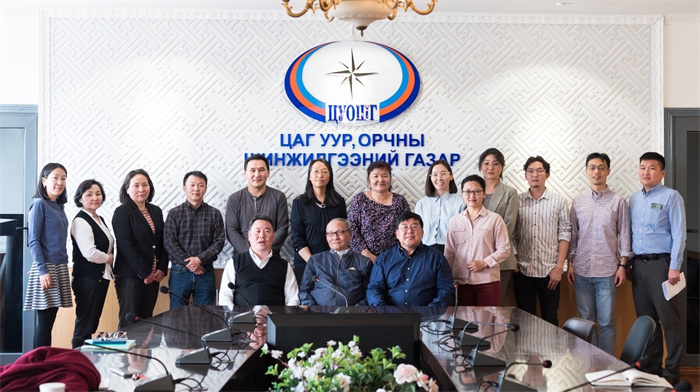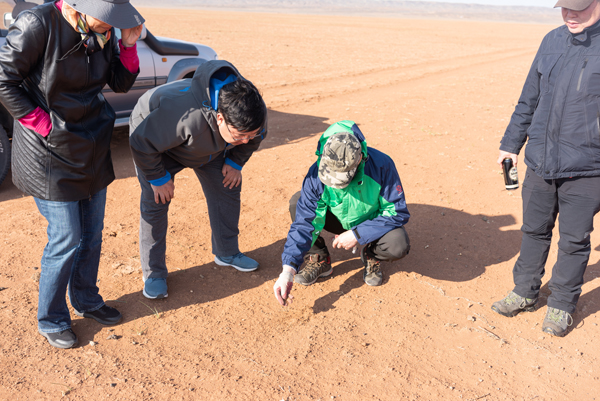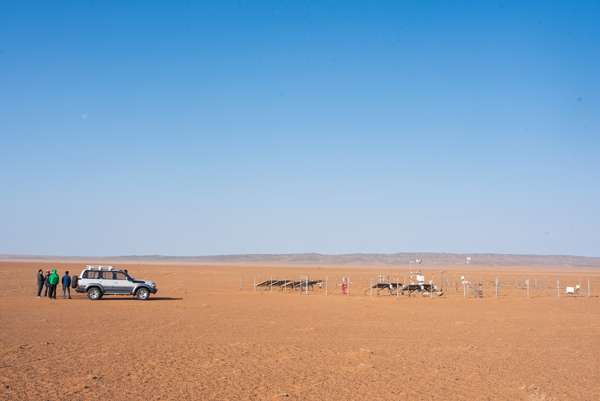In a collaborative effort to curb the threat of dangerous dust storms, Chinese and Mongolian researchers have forged a new partnership. A delegation of the Institute of Atmospheric Physics (IAP) at the Chinese Academy of Sciences visited Mongolia to launch an ambitious program focused on dust storm monitoring and prevention.
Earlier last month, researchers from China traveled to Ulaanbaatar, Mongolia to meet with scientists from the Information and Research Institute of Meteorology, Hydrology and Environment (IRIMHE) of Mongolia. On May 9, the group officially kicked off the China-Mongolia International Cooperation Cultivation Project on the cross-border dust storm research. "This project will strengthen our ability to predict severe dust storms across borders and understand how they form and change in a warming world," said Dr. BUEH Cholaw, a scientist of the Chinese delegation.
The kick-off meeting
Mongolia's harsh climate and fragile ecology have made it a hotspot for massive dust storms, including the deadly "March 15" dust storm in 2021. "Dust storms are a threat that knows no boundaries. Our two nations must work hand in hand to overcome this challenge," said Dr. Gomboluudev Purevjav, Science Director of IRIMHE and the project leader on the Mongolian side.
On May 10, the research team traveled to the Gobi desert in Mongolia to get a firsthand look at the meteorological conditions fueling regional sandstorms. At the Mandalgobi Meteorological Bureau of Dundgobi Aimag, director Azaa Erdenechuluun gave an informative overview of the powerful winds and dust storm events that frequently pass through the Gobi desert. These weather phenomena pose challenges to local agriculture and herding. To better understand Mongolia's sandstorms, the group visited three monitoring stations in Tsogt-Ovoo Soum of Omungobi Aimag, located in a valley that funnels forceful winds. Mongolian researchers track dust storm activity at these stations, which are equipped with instruments to monitor weather conditions like wind speed and dust transport. Despite the area's harsh environment, these monitoring efforts provide valuable data on the dust storms that menace communities along the border.
Field study
One of three monitoring stations in Tsogt-Ovoo Soum of Omungobi Aimag
Seeing the desert landscape firsthand gave the researchers a more tangible sense of the challenges it poses. Through collaborative monitoring efforts and data sharing, researchers from both countries hope to improve forecasting and mitigation of the powerful dust storms that imperil China and Mongolia. By linking hands across borders, they can work together to address a shared risk that knows no boundaries.
The visit is particularly meaningful as it comes on the heels of high-level government meetings emphasizing the need for China-Mongolia cooperation on ecological and environmental issues. As part of the partnership, Chinese and Mongolian researchers will share data, exchange expertise, and train young scientists together.
The visit was sponsored by the CAS-TWAS Excellence Center for Climate and Environment Sciences and the National Natural Science Foundation of China. Scientists on both sides expressed hope that this cross-border partnership will pave the way for more ambitious political and economic cooperation between the two neighbors.



